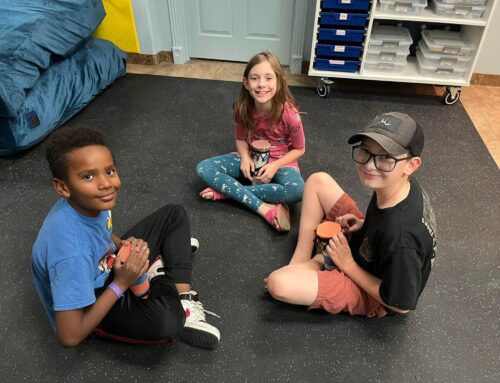Neurofibromatosis is primarily a genetic disorder that affects approximately 1 in 3,000-4,000 individuals in the United States (2019, National Institute of Neurological Disorders and Stroke). Tumors, usually noncancerous, form and attach to nerve tissue across the body. There are 3 types of neurofibromatosis disorders:
NF Type 1: Type 1 is oftentimes displayed during childhood between birth and age 10. Obvious signs at birth can include flat, light brown spots on the skin and freckling in the armpits and the groin area. Although symptoms aren’t lethal, children with NF Type 1 can experience a wide array of extremely uncomfortable effects including: bone deformities (i.e. scoliosis, bone deformities), tumors along the optic nerve (eyesight), learning disabilities, and attention-deficit disorders.
NF Type 2: Type 2 is not as common as Type 1 and symptoms usually appear during teen and adult years. Benign tumors can form in both ears which are called acoustic neuromas and/or vestibular schwannomas. As a result, problems include: hearing loss, ringing in the ears, headaches, reduced balance. Tumors have also been known to grow in spinal, cranial, ad peripheral nerves resulting in body pain, facial droop, decreased vision and cataracts, and numbness/weakness in muscles in the arms and legs.
Schwannomatosis: Schwannomatosis is also a benign form of neurofibromatosis that is not symptomatic until the adult years (over the age of 25). Similarly to Type 2, benign tumors form on the cranial, spinal, and peripheral nerves of the body resulting in chronic pain just about anywhere in the body, numbness and weakness of any muscle groups of the body, and overall reduced muscle mass.
(Mayo Clinic, 2019)
When it comes to pediatric services, the type that occupational therapists may come across in obviously neurofibromatosis Type 1. Just like many neurological conditions, occupational therapy can play a crucial role in intervention:
Cognitive development and training: Children with NF Type 1 may have learning disabilities that become apparent during the school years. Commonly, learning disabilities negatively impact a child’s ability to perform reading and mathematics. Occupational therapy can work with children and their parents in cognitive training as well as teach adaptation techniques to improve overall academic performance.
Postural instability: Due to bone deformities, especially in the spine, a child’s overall postural stability or ability to stay upright on their own may be challenged. Depending on the severity of the bone deformity, occupational therapists can show families and children therapeutic strengthening exercises, balance training strategies, and adaptations (external supports such as canes, crutches, walkers, etc.).
Standing balance: If postural stability is an issue, then standing balance and walking are directly impacted in the child, making it substantially difficult to participate in daily activities that require either of those skills. Along with adaptations and intervention for postural stability, occupational therapists can also work with children to incorporate changes into their daily routine in order to increase their overall participation with as little help as possible.
Vision deficits and compensation: Occupational therapy does not play a role in visual correction; however, OT can provide a child with compensation techniques for visual deficits. This can include adaptations such as enlarged printing, magnification equipment, lighting changes in the home and/or in school, textured writing, etc.
Behavioral/attention intervention: In some cases, NF Type 1 can cause secondary attention deficits hyperactivity disorder (ADHD), which many pediatric OTs come well-equipped to handle. This could involve working with the child and the parents about behavioral strategies to increase attention and to reduce hyperactive behavior (i.e. possibly sensory-related) in order to participate more fully in tasks at home and at school.
Parent/caregiver education: Part of the OT therapeutic model is a heavy education piece geared towards providing knowledge to the child’s closest family members. This way, the child can receive skilled intervention during the hours in which the OT is unable to see the child directly.
Co-treatment and consultation with other medical disciplines: OT cannot be considered a go-to option to alleviate 1000% of symptoms from NF Type 1, which is also true of many clinical disciplines in the healthcare field. For example, children with NF Type 1 oftentimes experience tremendous bodily pain which can only be managed by prescribed medication. OTs need to work together with other disciplines to make sure everyone is on the same page and to provide the child with the best interventions possible.
Neurofibromatosis: Overview (2019). Mayo Clinic. https://www.mayoclinic.org/diseases-conditions/neurofibromatosis/symptoms-causes/syc-20350490. Viewed on July 8, 2019.





